Also binding gender steroids, new SHBG homodimer by itself serves as a ligand getting a certain, highest affinity receptor (Roentgen
Inside human beings, each SHBG monomer subunit includes a 373 amino acid polypeptide which have three oligosaccharide front side organizations as well as 2 disulfide bonds (2). For every SHBG subunit include a good steroid binding web site ready binding DHT, testosterone, otherwise estradiol, in a fashion that the new adult SHBG homodimer enjoys several collection of steroid binding sites (29). Also, for every single monomer consists of two ?-sheet sets which can be essential in brand new dimerization of the mature SHBG glycoprotein. Especially, seven hydrogen ties is actually shaped across the program of one’s ?-sheets in a manner that two continued fourteen-stuck ?-sheets is actually molded from the adult homodimer (29;30).
The same as most other steroid hormonal-binding glycoproteins like cortisol-binding globulin or thyroxine-binding globulin, adult SHBG includes oligosaccharide top chains, and the architectural company of carbohydrate moieties are certain to each binding glycoprotein (31). Especially, per subunit of one’s SHBG homodimer is described as around three oligosaccharide moieties, a keen O-connected glycosylation web site within Thr7, and you can Letter-linked sites on Asn 351 and you can Asn 367 (32–34). Whilst the oligosaccharide front-organizations on SHBG do not seem to be critical for new glycoprotein’s steroid-binding pastime (34), just like the biologic function noticed in other glycoproteins, SHBG glycosylation tends to be important in the fresh glycoprotein’s interaction with particular cell-surface receptors (35).
SHBG) present on the plasma membranes of target cells (8;10;11;36;37). Only steroid-free SHBG appears to bind to RSHBG; however, once SHBG is bound to the receptor, sex steroids can then activate the anchored SHBG-RSHBG complex (8). Moreover, adding additional complexity to the system, not all steroids that bind to the SHBG-RSHBG complex function as agonists; some are antagonists (8). Moreover, some steroids such as DHT may function as either an agonist or antagonist for the system, depending on the specific target cell type (8;38). Ga hier meteen Although the full downstream effects of SHBG-RSHBG complex activation remain unclear, complex activation appears to affect target cell growth in addition to modulating the transcriptional activity of classic intracellular steroid hormone receptors (8).
SHBG may also actively participate in the uptake of sex steroids by target tissues through interactions with megalin, an endocytic receptor distinct from RSHBG (9). Although the uptake of SHBG-bound sex hormones via the megalin-mediated pathway is controversial (39), such findings support an expanded role of SHBG in sex steroids physiology.
SHBG Gene Construction and you may Splice Alternatives
The SHBG gene, located on the chromosome 17p12>p13, consists of eight exons separated by seven small introns (2;40;41). Exon 1 encodes for the nacent protein’s 29 amino acid secretion signal polypeptide (2), while the remaining exons [2–8] encode two contiguous laminin G–like (LG) domains (41). The amino-terminal LG domain encoded by exons 2–4 contains the steroid-binding site, the dimer interface, and several cation-binding sites (42). A ten amino acid sequence (residues 48–57) within exon 3 appears to correspond to the RSHBG-binding domain (43).
Although hepatocytes are the primary source of plasma SHBG (44), extrahepatic tissues, including testis, prostate, ovary, endometrium, breast, placenta and hypothalamus also express SHBG mRNA in humans (45–51). In fact, recent evidence suggests that the transcriptional control of SHBG gene expression is extremely complex and is regulated by at least three distinct promoters (PL, PT, and PN) which are expressed differentially in various human tissues (52).
Activation of the downstream promoter (PL), results in the production of the most common SHBG mRNA transcript [exon1L-8] (52). The exon IL-8 transcript is predominantly expressed in hepatocytes and encodes for all eight exons present in the SHBG gene. PL activation in the testis results in an identical eight-exon mRNA; however, distinct post-translational processing of the testicular transcript results in the production of androgen binding protein (ABP) instead of mature SHBG (45;53). In addition to the liver and testis, the 1L-8 mRNA transcript is also expressed in the human prostate, breast and regions of the brain (52). In the testis, activation of a second SHBG promoter (PT), located 1.9 kb upstream of PL, produces a second major mRNA transcript (45;52). In addition to possessing an unique 5? end amino acid sequence (exon 1T), the second testicular transcript also lacks exon 7(45;52). Recently, Nakhla and colleagues described a third SHBG gene promoter (PN), located within intron 1 of the adjacent FXR2 gene (52). Similar to PL and PT transcripts, PN transcripts possess a distinct first exon (1N). Differential activation of the three promoters triggers alternative splicing of SHBG exons which, in turn, may result in the expression of at least 19 unique SHBG transcripts (52). Furthermore, the pattern of SHBG transcript expression differs in normal tissues with PL-, PT-, and PN– derived transcripts being most abundantly expressed in the liver, testis, and prostate, respectively (52). Interestingly, alternative splicing of SHBG is more pronounced in certain cancer cell lines compared with normal tissues (52) ( Figure 1 ). Although Nakhla and colleagues hypothesize that only certain PL-derived transcripts produce stable SHBG isoforms, the potential biologic significance of alternatively spliced SHBG gene transcripts remains unclear (52).
